
The Heartbeat of Asuncion: Centro
Centro in Asuncion, Paraguay: A vibrant blend of historical landmarks, bustling markets, and modern delights, making it the true heartbeat of the city.
Centro, the vibrant heartbeat of Asuncion, offers a captivating blend of historical charm and modern dynamism. As the central hub of Paraguay’s capital city, this neighbourhood is a must-see for any visitor. Wander through its streets to discover a wealth of cultural landmarks, from the magnificent Government Palace to the iconic Independence House Museum, each narrating a piece of Paraguay’s rich history. Centro's bustling plazas, such as Plaza de los Heroes and Plaza Uruguaya, provide a perfect backdrop for people-watching and immersing yourself in local life. The area is brimming with lively markets, such as the Mercado Cuatro, where you can sample local delicacies, purchase unique handicrafts, and experience the vibrant energy of Paraguayan commerce. For those interested in art and architecture, Centro does not disappoint. The National Pantheon of the Heroes and the Metropolitan Cathedral are architectural marvels that offer a glimpse into the city's colonial past. Meanwhile, contemporary art lovers can explore numerous galleries and street art that dot the neighbourhood. As evening falls, Centro transforms with its array of dining options and nightlife, offering everything from traditional Paraguayan cuisine to international dishes, ensuring a delightful end to your day.
Local tips in Centro
- Visit the Government Palace early in the morning to avoid crowds and get the best photos.
- Take a stroll through Plaza Uruguaya in the late afternoon to enjoy local musicians and street performers.
- Bring cash to Mercado Cuatro, as many vendors do not accept credit cards.
- Wear comfortable shoes; Centro is best explored on foot.
The Heartbeat of Asuncion: Centro
Centro, the vibrant heartbeat of Asuncion, offers a captivating blend of historical charm and modern dynamism. As the central hub of Paraguay’s capital city, this neighbourhood is a must-see for any visitor. Wander through its streets to discover a wealth of cultural landmarks, from the magnificent Government Palace to the iconic Independence House Museum, each narrating a piece of Paraguay’s rich history. Centro's bustling plazas, such as Plaza de los Heroes and Plaza Uruguaya, provide a perfect backdrop for people-watching and immersing yourself in local life. The area is brimming with lively markets, such as the Mercado Cuatro, where you can sample local delicacies, purchase unique handicrafts, and experience the vibrant energy of Paraguayan commerce. For those interested in art and architecture, Centro does not disappoint. The National Pantheon of the Heroes and the Metropolitan Cathedral are architectural marvels that offer a glimpse into the city's colonial past. Meanwhile, contemporary art lovers can explore numerous galleries and street art that dot the neighbourhood. As evening falls, Centro transforms with its array of dining options and nightlife, offering everything from traditional Paraguayan cuisine to international dishes, ensuring a delightful end to your day.
Iconic landmarks you can’t miss
Centro Cultural Manzana de la Rivera
Experience the rich cultural tapestry of Paraguay at the Centro Cultural Manzana de la Rivera, where history and art come alive in the heart of Asunción.

National Pantheon of Heroes
Explore the National Pantheon of Heroes in Asunción, a stunning tribute to Paraguay's history and cultural heritage, blending beauty and solemnity.

Independence House Museum
Explore the Independence House Museum, where Paraguay's journey to independence unfolds through captivating exhibits and rich historical insights.

Escalinata José de Antequera y Castro
Explore the Escalinata José de Antequera y Castro in Asunción for breathtaking views, local culture, and a vibrant atmosphere.
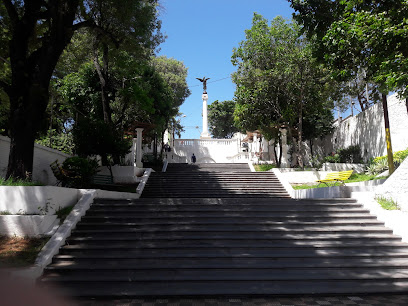
Palacio de López
Explore the grandeur of Palacio de López, Paraguay's presidential palace, a stunning neoclassical landmark in Asunción steeped in rich history.

Conjunto Escultórico de Asunción
Explore the Conjunto Escultórico de Asunción, a stunning artistic tribute to Paraguayan culture and history, set in a serene park environment.

Centro
Explore the rich cultural heritage of Paraguay at Centro Museum, a vibrant tourist attraction in Asunción showcasing art, history, and tradition.

Edificio Histórico del Puerto de Asunción
Discover the rich cultural heritage at the Edificio Histórico del Puerto de Asunción, an architectural gem on the banks of the Paraguay River.

Centro Histórico de Asunción
Explore Asunción's vibrant Centro Histórico, a cultural treasure trove bursting with history, stunning architecture, and local charm.

Plaza de la República
Experience the cultural heart of Asunción at Plaza de la República, a captivating landmark rich in history and vibrant local life.

Unmissable attractions to see
Plaza Uruguaya
Experience the vibrant culture and serene beauty of Plaza Uruguaya, a must-visit park in the heart of Asunción, Paraguay.

National Pantheon of Heroes
Explore the National Pantheon of Heroes in Asunción, a captivating tribute to Paraguay's history and national heroes, blending cultural richness and architectural beauty.

Museo del Barro
Explore the Museo del Barro, an art museum in Asunción showcasing Paraguay's rich cultural heritage through diverse and captivating exhibits.

Museo Nacional de Bellas Artes de Asunción
Explore the rich artistic heritage of Paraguay at the Museo Nacional de Bellas Artes in Asunción, showcasing local and international masterpieces.

MUSA Museum of Chairs Asuncion
Explore the world of chair design at the MUSA Museum of Chairs in Asuncion, a unique cultural attraction showcasing a stunning collection of furniture art.

Centro
Experience the vibrant culture and rich history of Asunción in the bustling heart of Centro, a top tourist attraction and museum hub.
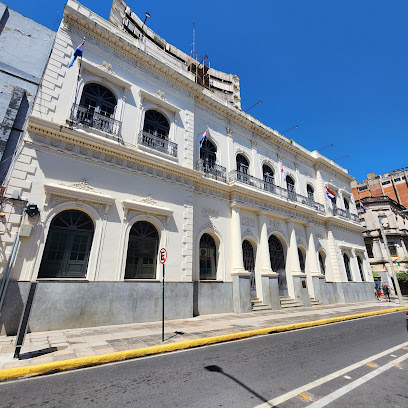
Paseo de los Turistas
Explore Paseo de los Turistas: A beautiful promenade in Asunción showcasing art, culture, and local cuisine amidst scenic surroundings.

Letra corpórea Asunción
Discover Letra Corpórea Asunción, an iconic artistic installation symbolizing the vibrant culture and spirit of the capital of Paraguay.

Essential places to dine
Bolsi
Experience the heart of Paraguayan cuisine at Bolsi – where family-friendly dining meets diverse culinary delights.

Lido Bar
Discover the flavors of Paraguay at Lido Bar in Asunción - where tradition meets taste in every dish.
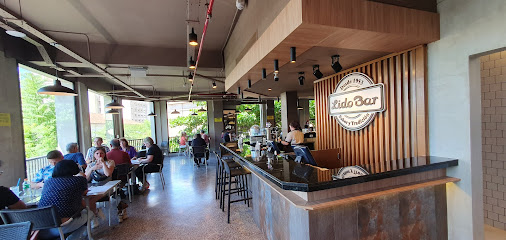
La Cabrera
Experience the best Argentine steaks at La Cabrera in Asunción - a must-visit destination for food lovers seeking culinary excellence.

Maurice de Talleyrand
Discover the essence of gourmet dining at Maurice de Talleyrand in Asunción – where exquisite cuisine meets elegant ambiance.

Taberna Española
Experience authentic Spanish flavors at Taberna Española in Asunción—where tradition meets taste in a vibrant dining atmosphere.
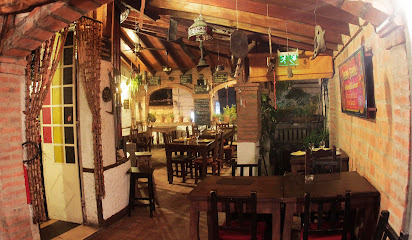
Tierra Colorada Gastro
Discover authentic Paraguayan cuisine at Tierra Colorada Gastro in Asunción - where tradition meets modern elegance.

Ese lugar
Discover authentic Paraguayan flavors at Ese Lugar in Asunción - where every dish tells a story.

MBURICAO Restaurante
Experience the fusion of French and Italian cuisines at MBURICAO Restaurante in Asunción - where every dish tells a story.
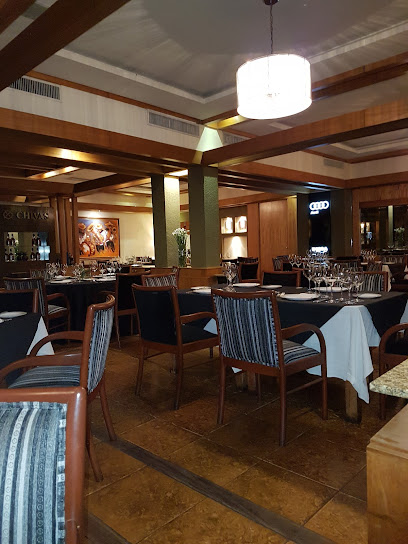
San Pietro Restaurante
Experience culinary excellence at San Pietro Restaurante in Asunción, where local flavors meet international cuisine in an elegant setting.

La Casa del Centro Restó+Bar
Experience authentic Paraguayan flavors at La Casa del Centro Restó+Bar in Asunción - a perfect blend of tradition and modern cuisine.

Markets, malls and hidden boutiques
Paseo La Galería
Explore Paseo La Galería, a vibrant shopping mall in Asunción offering diverse retail, delightful dining, and exciting entertainment for all.
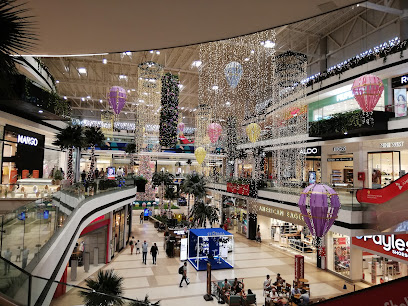
Shopping del Sol
Discover the vibrant shopping experience at Shopping del Sol in Asunción, where fashion, dining, and entertainment come together in one stunning location.

Shopping Mariscal
Explore Shopping Mariscal in Asunción, a vibrant shopping mall offering diverse retail, dining, and entertainment experiences for all travelers.

Shopping Villa Morra
Discover the vibrant Shopping Villa Morra in Asunción, a bustling shopping mall with diverse shops, dining options, and a taste of Paraguayan culture.
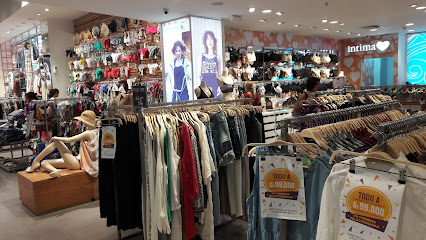
Marketplace
Discover an unforgettable shopping experience at Asunción's Marketplace, featuring clothing, home goods, and local treasures.

AO Paraguay
Explore AO Paraguay for unique gifts and authentic Paraguayan crafts that reflect the rich culture and artistry of Paraguay.

SAX Department Store-Asunción
Explore SAX Department Store in Asunción for a diverse range of clothing, accessories, and quality products at unbeatable prices.
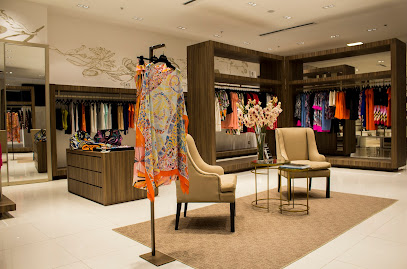
Amacén de Tiendas
Discover Amacén de Tiendas, Asunción's vibrant shopping mall with diverse stores from children's books to fashion, perfect for tourists seeking unique finds.

Kshop.py
Explore Kshop.py in Asunción for an unforgettable shopping experience featuring local culture, diverse shops, and delightful dining options.

Shopping China
Discover a world of shopping at Shopping China in Asunción, where diverse products and unbeatable prices await every traveler.

Essential bars & hidden hideouts
Terra Bar
Experience the lively ambiance and diverse drink selection at Terra Bar in Asunción, the heart of Paraguay's vibrant nightlife.
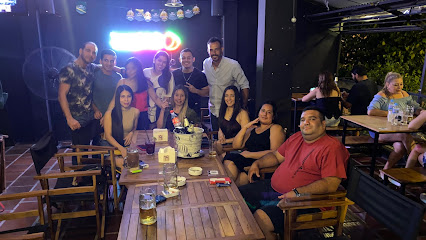
Picaditas Retro Bar
Discover the retro charm of Picaditas Retro Bar, a vibrant nightlife destination in Asunción, perfect for cocktails and socializing.

CATTE PUB
Discover the vibrant atmosphere of CATTE PUB, an Irish pub in Asunción, blending local culture with a touch of Irish charm for an unforgettable night.

El bar de tony
Discover the vibrant nightlife of Asunción at El Bar de Tony, a lively spot for drinks, music, and unforgettable local experiences.

Sajonnia Bar Comidas y Tragos
Experience the vibrant culture of Asunción at Sajonnia Bar Comidas y Tragos, where delicious food and refreshing drinks await.

Coyote Drinks
Experience the best of Asunción's nightlife at Coyote Drinks, where expertly crafted cocktails and a vibrant atmosphere await every visitor.

ECIRIX house
Discover the lively ambiance and local flavors at ECIRIX House, a vibrant bar in Asunción that offers a unique cultural experience for tourists.

Drinks Bar
Experience Asunción's vibrant nightlife at this trendy drinks bar, offering creative cocktails and a lively atmosphere for all visitors.

Segovia Palace
Experience the vibrant nightlife of Asunción at Segovia Palace, where lively ambiance meets refreshing drinks in a cultural hotspot.

Vache House
Discover Vache House, a vibrant bar in Asunción offering creative cocktails and a lively atmosphere perfect for nightlife enthusiasts.

Local Phrases
-
- HelloHola
[oh-lah] - GoodbyeAdiós
[ah-dee-ohs] - YesSí
[see] - NoNo
[noh] - Please/You're welcomePor favor/De nada
[por fah-vor/deh nah-dah] - Thank youGracias
[grah-see-ahs] - Excuse me/SorryPerdón
[pehr-dohn] - How are you?¿Cómo estás?
[koh-moh ehs-tahs] - Fine. And you?Bien. ¿Y tú?
[byen. ee too] - Do you speak English?¿Hablas inglés?
[ah-blahs een-glehs] - I don't understandNo entiendo
[noh ehn-tee-ehn-doh]
- HelloHola
-
- I'd like to see the menu, pleaseMe gustaría ver el menú, por favor
[meh goo-stah-ree-ah behr ehl meh-noo, poor fah-vor] - I don't eat meatNo como carne
[noh koh-moh kahr-neh] - Cheers!¡Salud!
[sah-loohd] - I would like to pay, pleaseMe gustaría pagar, por favor
[meh goo-stah-ree-ah pah-gar, poor fah-vor]
- I'd like to see the menu, pleaseMe gustaría ver el menú, por favor
-
- Help!¡Ayuda!
[ah-yoo-dah] - Go away!¡Vete!
[veh-teh] - Call the Police!¡Llama a la policía!
[yah-mah ah lah poh-lee-see-ah] - Call a doctor!¡Llama a un doctor!
[yah-mah ah oon dohk-tohr] - I'm lostEstoy perdido
[ehs-toy pehr-dee-doh] - I'm illEstoy enfermo
[ehs-toy ehn-fehr-moh]
- Help!¡Ayuda!
-
- I'd like to buy...Me gustaría comprar...
[meh goo-stah-ree-ah kohm-prahr] - I'm just lookingSolo estoy mirando
[soh-loh ehs-toy mee-rahn-doh] - How much is it?¿Cuánto cuesta?
[kwan-toh kwehs-tah] - That's too expensiveEso es demasiado caro
[eh-soh ehs deh-mah-see-ah-doh kahr-oh] - Can you lower the price?¿Puede bajar el precio?
[pweh-deh bah-hahr ehl pree-syoh]
- I'd like to buy...Me gustaría comprar...
-
- What time is it?¿Qué hora es?
[keh oh-rah ehs] - It's one o'clockEs la una
[ehs lah oo-nah] - Half past (10)Y media (10)
[ee meh-dee-ah (diez)] - MorningMañana
[mah-nyah-nah] - AfternoonTarde
[tahr-deh] - EveningNoche
[noh-cheh] - YesterdayAyer
[ah-yehr] - TodayHoy
[oy] - TomorrowMañana
[mah-nyah-nah] - 1Uno
[oo-noh] - 2Dos
[dohs] - 3Tres
[trehs] - 4Cuatro
[kwah-troh] - 5Cinco
[seen-koh] - 6Seis
[says] - 7Siete
[syeh-teh] - 8Ocho
[oh-choh] - 9Nueve
[nweh-veh] - 10Diez
[dyehs]
- What time is it?¿Qué hora es?
-
- Where's a/the...?¿Dónde está...?
[dohn-deh ehs-tah] - What's the address?¿Cuál es la dirección?
[kwal ehs lah dee-rehk-syohn] - Can you show me (on the map)?¿Puede mostrarme (en el mapa)?
[pweh-deh mohs-trar-meh (ehn ehl mah-pah)] - When's the next (bus)?¿Cuándo es el próximo (bus)?
[kwan-doh ehs ehl proh-see-moh (boos)] - A ticket (to ....)Un boleto (a ....)
[oon boh-leh-toh (ah)]
- Where's a/the...?¿Dónde está...?
History of Centro
-
Centro, the historic heart of Asuncion, was founded in 1537 by Spanish explorer Juan de Salazar y Espinosa. As the first capital of Paraguay, it played a crucial role in the early colonial period, serving as a military and administrative hub. The layout of the neighborhood reflects the typical Spanish colonial architecture, with plazas and churches that were central to community life.
-
The late 19th century saw Centro become a focal point during the War of the Triple Alliance (1864-1870), which pitted Paraguay against Argentina, Brazil, and Uruguay. The conflict devastated the population and infrastructure, but Centro emerged as a symbol of resilience, with many buildings still bearing the scars of war. The aftermath led to significant reconstruction efforts that shaped the area’s modern identity.
-
The 20th century brought a cultural renaissance to Centro. The establishment of theaters, galleries, and cultural institutions transformed the neighborhood into a vibrant artistic center. The historic Teatro Nacional del Paraguay, inaugurated in 1909, became a cornerstone of Paraguayan culture, hosting performances that celebrated both local and international talent.
-
Centro witnessed significant political events throughout the 20th century, including the dictatorship of Alfredo Stroessner (1954-1989). During this period, the neighborhood served as a stage for protests and political movements advocating for democracy. The legacy of these struggles is evident in the public squares and monuments that commemorate the fight for civil rights and freedom.
-
In recent decades, Centro has experienced rapid urbanization and gentrification. While efforts have been made to revitalize the area, challenges such as economic inequality and infrastructure strain persist. The ongoing development projects aim to preserve the historical character of Centro while accommodating the needs of a growing population and the influx of tourists to Asuncion.
Centro Essentials
-
Centro is easily accessible from other neighborhoods in Asuncion. You can take a taxi or ride-sharing services like Uber, which are widely available. Public buses also connect Centro to various neighborhoods; look for routes heading to the main square, Plaza Uruguaya. If you're arriving from the Silvio Pettirossi International Airport, expect a 30-minute taxi ride directly to Centro.
-
Centro is a compact area best explored on foot. Bicycles can be rented from local shops, and there are bike lanes in some parts of the neighborhood. Public buses are a cost-effective option for longer distances, operating regularly. Taxis and ride-sharing apps are also convenient for quick trips around the neighborhood.
-
Centro is generally safe for tourists, but it’s wise to remain vigilant. Areas around Avenida José Asunción Flores and Calle Palma have been reported to have higher crime rates, especially at night. Avoid displaying expensive items and be cautious when using your phone in crowded places. Stick to well-lit areas after dark.
-
In case of emergency, dial 911 for police and medical assistance. The Hospital de Clínicas and various private clinics are available throughout the city. It is advisable to have travel insurance that covers emergencies. For minor health issues, local pharmacies can provide over-the-counter medications.
-
Fashion: Do wear comfortable clothing suitable for the tropical climate, but avoid overly casual attire when dining out. Religion: Do dress modestly when visiting churches; women should cover their shoulders and knees. Public Transport: Do be respectful and offer your seat to the elderly. Don't engage in loud conversations. Greetings: Do greet locals with a friendly 'Hola' and a smile. Eating & Drinking: Do try local foods such as 'sopa paraguaya' and drink tereré. Don't eat while walking in the streets, as it's considered impolite.
-
To experience Centro like a local, visit the Mercado 4 for an authentic shopping experience with local produce and crafts. Engage with street vendors and try traditional snacks. Attend a local festival if your visit coincides with one, as they often feature music, dance, and food. Lastly, explore the historic architecture and take time to relax in the many parks scattered throughout the neighborhood.
Trending Landmarks in Centro
Nearby Cities to Centro
-
Things To Do in Aregua
-
Things To Do in Ypacarai
-
Things To Do in San Bernardino
-
Things To Do in Villarrica
-
Things To Do in Carmen del Parana
-
Things To Do in Encarnacion
-
Things To Do in Hernandarias
-
Things To Do in Foz do Iguaçu
-
Things To Do in Puerto Iguazú
-
Things To Do in Tacuarembó
-
Things To Do in San Miguel de Tucumán
-
Things To Do in Salta
-
Things To Do in Tarija
-
Things To Do in Fray Bentos
-
Things To Do in Rosario













